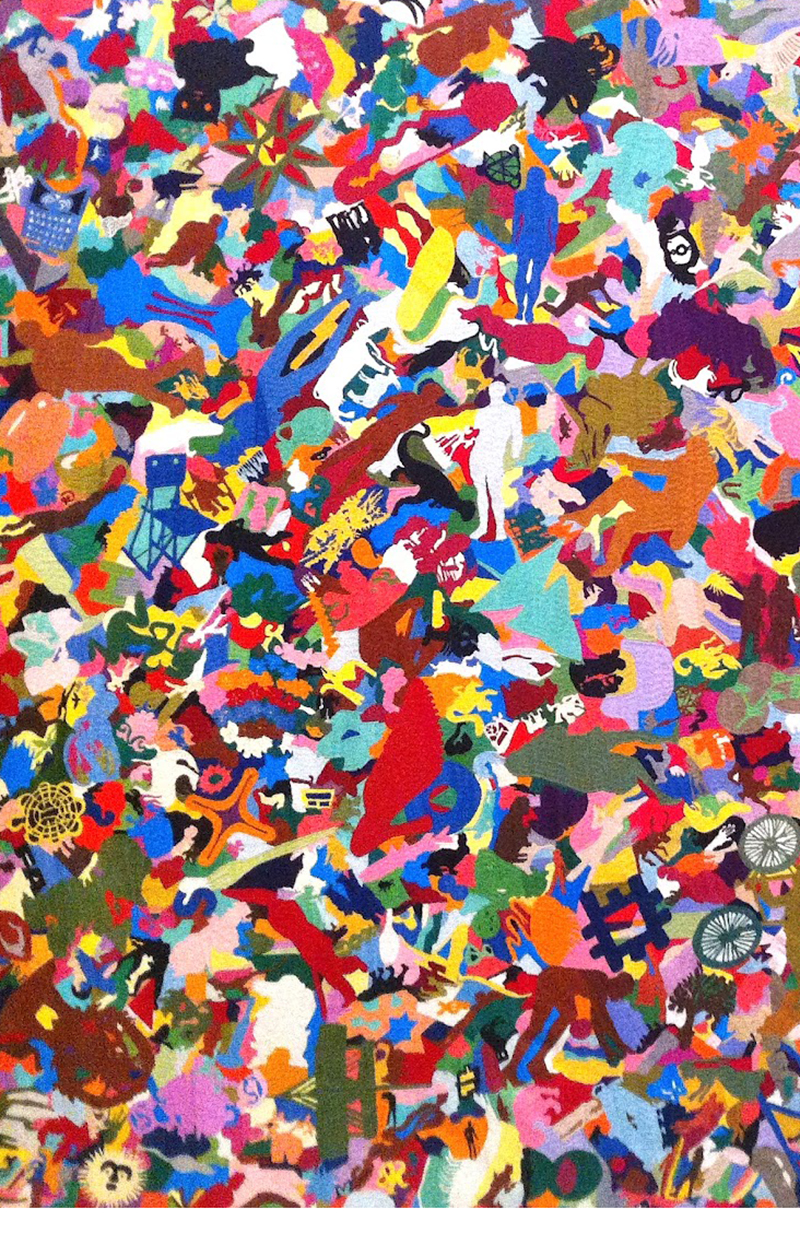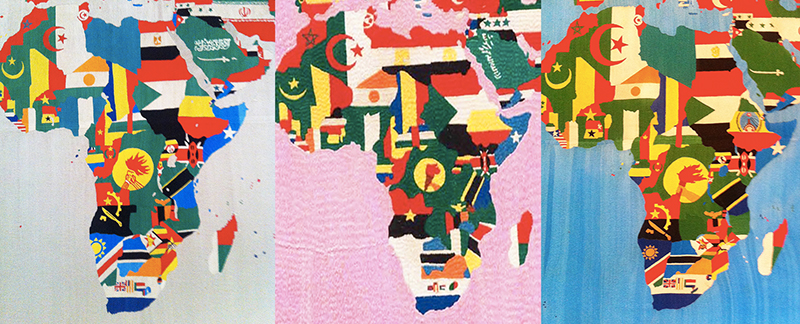index---- |
ANGEL'S DUST
For Devil`s Dust as part of my Comme des Marxists work, I reused left over from my studio. For Angel`s Dust, my idea consists of working with the studio waste of famous British brands and designers like Burberry, Vivienne Westwood, Alexander McQueen, Stella McCarthney, Paul Smith, and others. In particular, I’ll try to focus on fine exquisite wool and cashmere fabrics and try to avoid cottons, since cotton was only introduced as a domineering product of the industrial revolution to supplant wool. The Lumpenproletariat suffered enormously from the loss of this healthy, climate appropriate and long lasting material to end up with cold, barely temperature adjustable heavy cotton that is used best in try and hot places where cotton grows. Therefore, my quest for exclusive high quality wool waste and the hope of some extra donations will also lead us to the famous ‘bespoke tailoring” on Savile Row. This “golden mile of tailoring” is brimming with history that includes next to other things also the seat of the Royal Geographical Society between 1870 and 1920 where the world was redesigned and tailored into a British Imperium. This little fact is inspiring me to create three spheres covered with textiles in a way, they turn into globes to show the geographical expansion and contraction of Great Britain between 1870, 1920 and 2018. These Angel’s Dust globes will be suspended from the gallery ceiling and also decorate the cat walk for Comme des Marxists. With the help of a workshop at the London University of the Arts combined with the voluntary participation of some art students I had already collaborated with for my series Manhattan Marxism / Strange teaching / Wool Works / Exploitation, we will try to reassemble in a quasi-aleatory way all the received textile left overs and use them for new designs and somehow wearable silhouettes. Needless to say, the metaphor angel is standing here for all participating successful brands and their quality waste and donations we solicit. In financial parlance, angel investment equals the very first investments in equities of startup companies when received money looks like sent from heaven. Longing for the flight path of angels, using the leverage of my renowned hosting institution, the fashion space gallery and the non-commercial aspect of my proposition, I would also like to ask these fashion houses, to volunteer some design help. I`m thinking of somebody working in house who could just drop by with ideas to implement. But I’d also very happy for given fashion drawings to be reinterpreted freely with our limited time and means, thus limiting our use of google or the in some cases highly trained design and production knowledge of our student participants. For example, one of my students, Cem Cemako is an alumni of Antwerp’s Royal Academy of Fine Arts. Hence, as a design concept, I`d like to brain pick also the very sources that leave us their textile waste. Even if it is an intern, whoever is employed at these firms and volunteers design ideas I’d be happy to use them and credit them. Should we really get help from these establishments, I’d consider that as a form of ready-made recycling in an economy of gifting, sharing and open sourcing. My purpose in this exercises is to rearticulate waste repurposing and soliciting of left overs as a form of sustainability. The help and good will of angels, the in all likelihood outstanding quality of the solicited materials and trash, and the instrumental blessing or excuse of naming all this results fine art and the hands of talented young people in the workshop assigned to me for the duration of a week in combination with extra hands on from art schools, should guarantee some sustainability to this particular project. But I would like to also have it stand for a model for people without institutional contexts, tons of help and access to fancy firms to replicate it as a DIY model. I want anybody to go through their closets at home and that of their friends and save them from garbage bins, moths or irrelevance. In general, whether food produce, fashion or even labor, as a society, we are nearly drowning in a sea of unnecessary, badly used goods, products or services and could increase our sustainability by creative recycling, repairing and re-purposing of waste, forgotten, or half broken things without the stigma of cheapness and the pressures of advertisements and commerce. Hence, everybody will nurture and free up their own angels by looking back at their own trash and rediscover a new future. This again will hopefully blow strong winds into the wings of Walter Benjamin’s Angel of History, with a storm he calls progress that pushes everything forward while the eyes and backs still look backwards on a catastrophe. Historically speaking, this catastrophe has been definitely a reality in relationship to fashion and textile production: I’m listing her only some key words that have stained this industry most likely forever: slavery, child labor, industrialization, exploitation, fires, markets, overproduction, unemployment, deindustrialization, globalization, waste, toxicity, global warming, trade wars and wars. Not totally unrelated of the effects of these ongoing miseries, the term Angel’s Dust itself is contaminated and stained since it has also been associated with drug culture specifically with more serious illegal substances like cocaine, meth, PCP etc.. As we are aware, the drive to reach for the exclusive world of the most desirable consumer goods and that of consciousness altering overlap, not even addressing the extra efforts undertaken to get a hand on them.
this is how hte patch work FABRIC could look .-. in this case .. A boetti . made by the
workshop MANHATTAN MARXISM / STRANGE TEACHING / WOOLS WORKS, ANGEL’S DUST, London, October 1, 2018 - January 19, 2019
( lasting thorught the period of the exhibiton including the time of installation October. 4 (several days befoer ) to the end in february 2019) with participating studetns from the State Art Academy Stuttgart and the London School of the ArtsS
here is a sample of the SPHERE I - THE GEORPHIC SHILLOUTE OF GREAT BRITAINS IN 1870 SPHERE II - THE GEORPHIC SHILLOUTE OF GREAT BRITAINS IN 1920 SPHERE III - THE GEORPHIC SHILLOUTE OF GREAT BRITAINS IN 2018 -- GB in 1870, 1920 and 2018 ( approximaet REFERENCE.. A BOETTI... THIS IS KIDn OF HOW IT CAN LOOK .. BUT WE WOULN T HAVE TO MAKE HE ACDTUALY MAPS.. but see.. ) boetti made his work in afghanistan , pakistan.. a hotspot of past and current colonial projections, DREAMS and nightmares) --hence his work wil l serve a blueprint
|

